EFFECT OF LITERACY ON ECONOMY IN INDIA
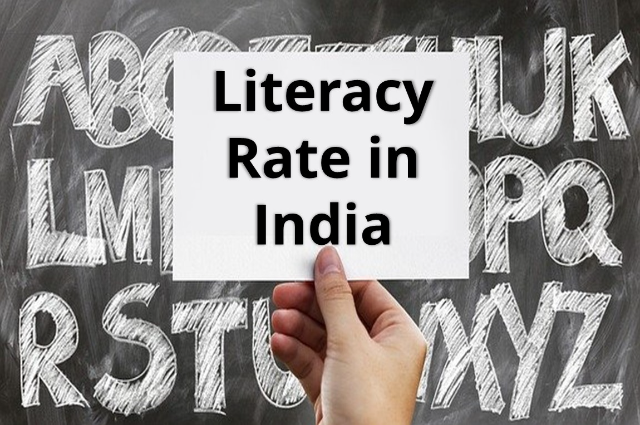
Image by Gerd Altmann from Pixabay
Demographically India occupies 2nd rank in the world. The population in India represents 17.99% of the world's total population arguably meaning there is an Indian national in every six person on earth. With a population of over 1.21 billion and an enormous growth rate of 1.41% every year, India is expected to surpass China by 2024. 65% of India's population is between the age group of 15-64 years while more than 30% is under 15 years of age, the average age of Indian population by the end of 2020 was 29 years and is considered to be very young.
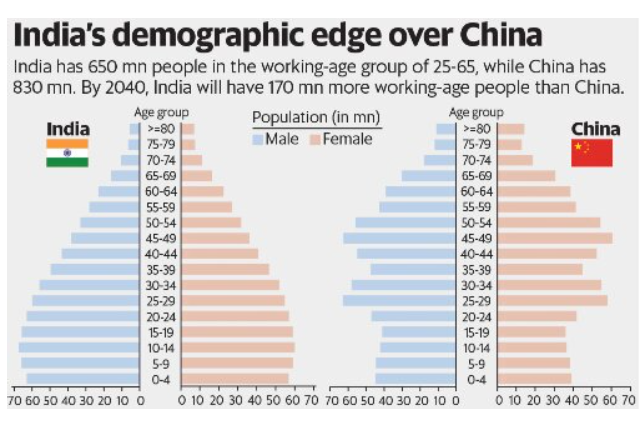
When we look at the literacy rate in India, it stands at 74.04% in 2021 with a notable growth rate every year. Literacy rate in India has seen a rise from 12% in 1947 to 74.04% in 2021 although it is still trailing the world average literacy rate ( 84% ) by almost 10%. There is need to improve the the overall literacy rate in India as most of it is young population and proper literate young population can lay the foundation to a huge potential human capital.
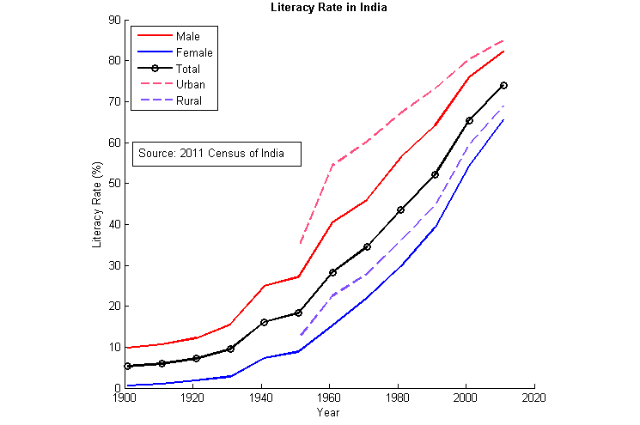
LITERACY AND THE ECONOMIC GROWTH
Economic growth of a country has its foundation in it's literacy rate. Human resource i.e. the population, it's skills, working capacity & work efficiency is the most important factor in a country's prosperity. Japan can be seen as an example where there is lack of natural resources but proper utilization and channelization of human workforce has been the pioneer factor in the country's progress. India has a huge and young workforce, which, if can be educated and trained properly, could serve to the nation's needs.
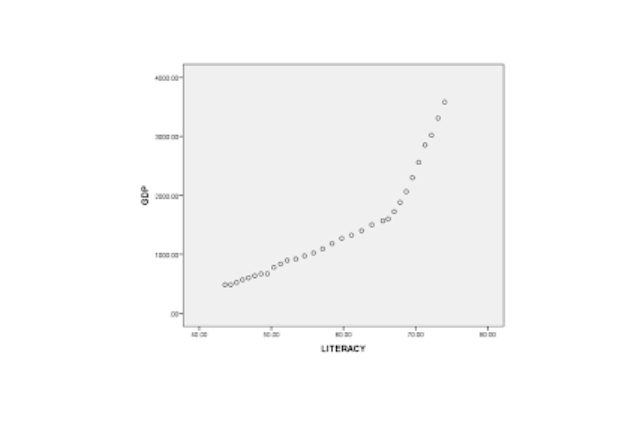
From this graph we can see GDP of a country ( in this case India ) is directly dependent on it's literacy rate. In turn the growth in GDP benefits the literacy rate , thus creating a healthy symbiotic relationship.
"Literacy, as defined by the census operations, is the ability to read and write with understanding in any language. This is a definition which closely matches the UNESCO’s definition. But given the importance of specific technical skills in improving health to access jobs, it is critical that importance to those specific skills is also given. Just being literate (as per the definition of census operation) does not make people competent enough to enter the labor force in the market. Moreover, enhancing additional supplementary skills is a necessity in an economy like India which has a lot of structural unemployment. It will reduce the occupational immobility of labor and will also improve the employability of the labor supply. Unskilled labors are seasonally employed, mainly in agricultural fields, and paid minimal wages. Imbibing skills in these workers will ensure them more permanent jobs and higher wage rates. Agricultural sector, which employs more than 50% of the workforce, is highly unproductive. Imbibing technical skills in these workers will enable them to work in productive, decent-wage jobs in industries. Thus, enabling better utilization of human capital and making most of the human resource."
IMPORTANCE OF LITERACY IN INDIA’S ECONOMIC GROWTH
India's youth workforce always has remained underutilized / misused since it's independence. We have seen rise in child labor in India rather than educating them and using the youth. Women are also forced to work in improper work environment with below average wages. The imposition of lockdowns due to COVID-19 has shown the real big picture of the migrant laborers in India. India ranks 112th out of 134 countries surveyed for gender equality with a dismal score of 0.6155 (WEF report, 2010) which is lowest amongst the BRIC nations. The low female work participation rate (FWPR) is one of the indicators of human capital being underutilized in India. Women constitute 48.26% of the total population and contribute to only 23% of the GDP.
India is now becoming an industrial economy. But majority of the population still lives in rural areas. The strong economic difference between rural and urban India is due to industrialization which has benefitted mostly the urban areas. Though 68.84% of people live in rural areas, the main source of income is by and large only agriculture. Agriculture contributes to only 17% of India’s GDP but has 52% of the total labor force working in it, the economic condition of rural India is trailing to that of urban India.
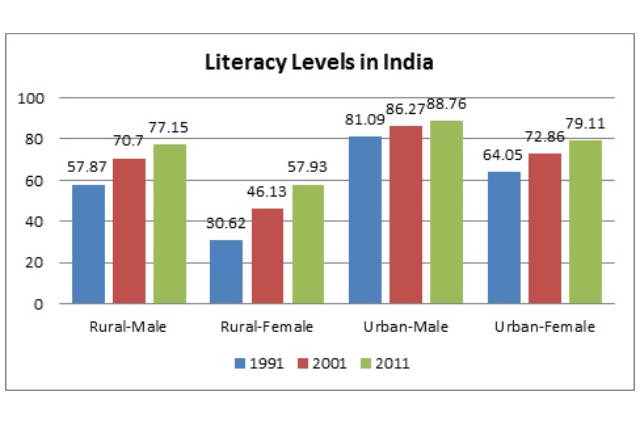
CHALLENGES AND SOLUTIONS TO LITERACY AND ECONOMY IN INDIA
Looking at the challenges faced in implementing education in India, here are few challenges me as an observer and other researchers have noticed -
- India is a country of diversity in its languages, culture, religion and region. It remains a huge challenge for a centralized government to implement the education policies in every corner of the country.
- It is not just the children who needs to be educated, but their parents also need proper counselling regarding the importance of education.
- Parents who are sending out their children as child laborers due to poverty, needs to be made aware of a good future post education than the immediate relief to their poverty.
- Absence of a well framed education policy in the country.
Now we can have a look at few suggested solutions -
- A well framed education policy from a centralized government with the responsibility of implementation being handed over to the local government, which further needs to be mentored and monitored by panels built for specific local governments according to their requirements and needs.
- Scholarships & educational loans interest free or at minimal rate of interests for every student from economically weak background must be made available and be included in national education policy.
- Parents whose income lay below poverty line must be provided with minimum grants from the government so as to support their children's education and other necessities.
- Education budget should be given highest importance and it should be the field of highest but proper expenditure of the government.
"Given the importance of literacy in improving the economic situation of a country, as it has been shown that there exists a high correlation between literacy rate and the GDP, it becomes an imperative to find some innovative measures to increase the literacy growth rate. Milton Friedman, recipient of the Nobel Memorial Prize, had suggested in 1955 the idea of introducing school vouchers. According to this idea, the government would fund students for education instead of schools which would essentially mean a transfer of power to the students and thus allowing student choices to determine where the government’s education funds go. This system would bring in competition in the schools, be it private schools or government schools, and thus leading to a better education system. Decentralizing power over schools to local bodies and reducing the political power of teachers’ unions would also lead to a better infrastructure in schools and a better education system. There could be many more measures to add to the above suggested measures which can dramatically improve the quality of education system in the country, particularly the government run schools. However what needs is a careful examination for the best alternative and the political will for effective implementation. Until these reforms in the education sector are not taken upon seriously there would be a waste of human resource and India would have foregone a golden opportunity to change the course of its economic history."
REFERENCES
- IMPORTANCE OF LITERACY IN INDIA’S ECONOMIC GROWTH by Vaman S Desai.
- Census of India, 2011, Government of India, Ministry of Home Affairs.
- Google Images.
